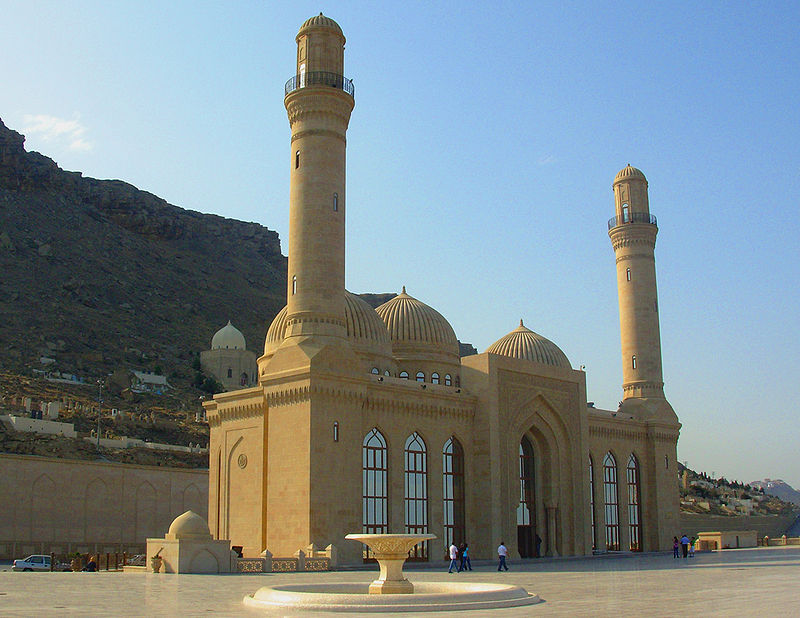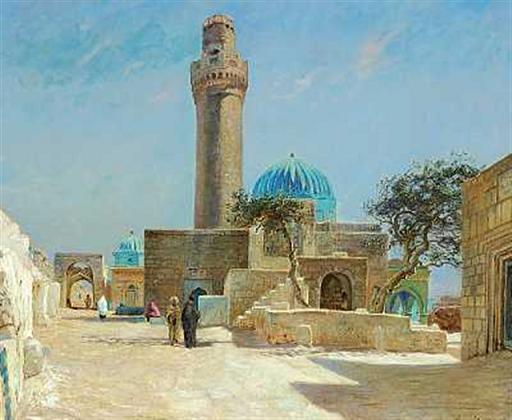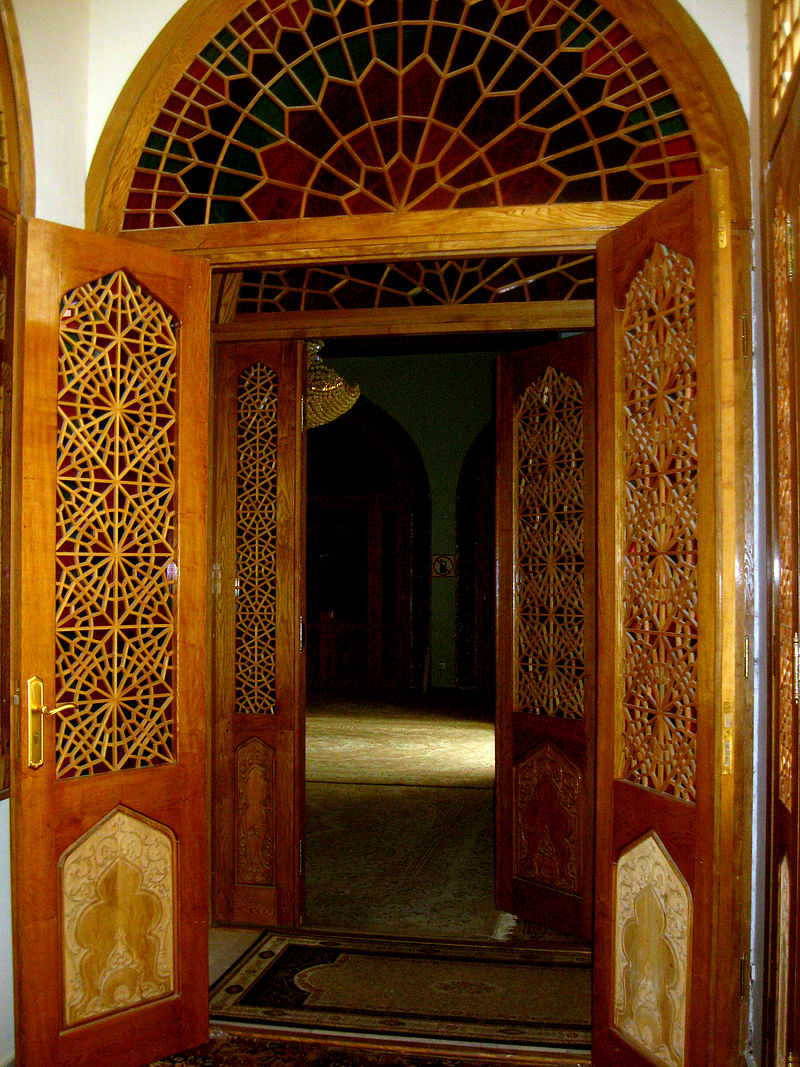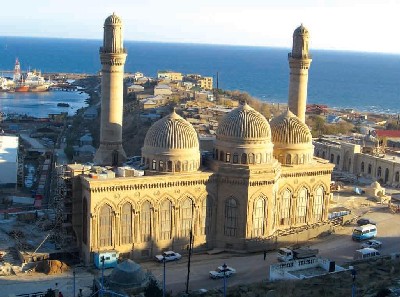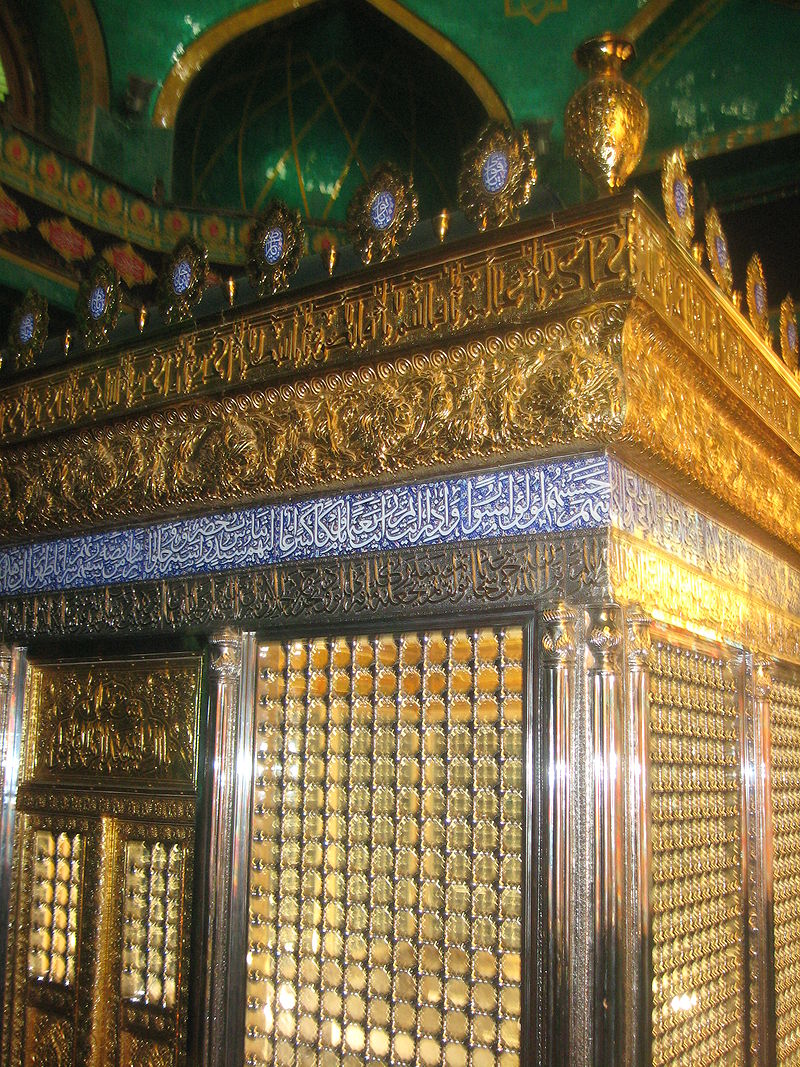The Bibi-Heybat Mosque (Azerbaijani: Bibiheybət məscidi) is a historical mosque in Baku, Azerbaijan. The existing structure, built in the 1990s, is a recreation of the mosque with the same name built in the 13th century by Shirvanshah Farrukhzad II Ibn Ahsitan II, which was completely destroyed by the Bolsheviks in 1936.
The Bibi-Heybat Mosque includes the tomb of Ukeyma Khanum (a descendant of Muhammad), and today is the spiritual center for the Muslims of the region and one of the major monuments of Islamic architecture in Azerbaijan.
It is locally known as "the mosque of Fatima", which is what Alexandre Dumas called it when he described the mosque during his visit in the 1840s.
The mosque was built over the tomb of the daughter of the seventh Shiite Imam - Musa al-Kazim, who fled to Baku from persecution of caliphs. On the tomb there is carved on a stone inscription indicating that Ukeyma Khanum belongs to the sacred family: "Here was buried Ukeyma Khanum, a descendant of the Prophet Muhammad, the granddaughter of the sixth Imam Ja'far al-Sadiq, the daughter of the Seventh Imam Musei Kazym, sister of the eighth Imam Riza".
View of the old mosque before restoration in 1911
Based on the writings on the south wall of a mosque, historians attribute the construction by the end of the 13th century. Arabic inscription on the mosque wall reads: "The work Mahmud ibn Sa'ad", which is the same architect who built the Nardaran Fortress near Baku.
Haji Sheikh Sharif was among many Muslims, buried near the mosque, he arrived in Baku to spread Sufism, and spent the rest of his live in this temple.
Famous French writer, Alexandre Dumas, who visited the mosque in the 1840s, in his book "The World" wrote: The mosque - a place of worship for infertile women, they come here on foot, worship, and within a year gain the ability to give birth.
The mention of the mosque is also found in the works of local and European explorers and travelers, such as the Abbasgulu Bakikhanov, Ilya Berezin, Johannes Albrecht Bernhard Dorn, Nicholas Khanykov and Yevgeni Pakhomov.
In 1911, the patron of Baku, Alasgar Agha Dadashov with architect Haji Najaf constructed a new building of the mosque. Also, the reconstruction of the tomb and the old mosque took a cubic form.




